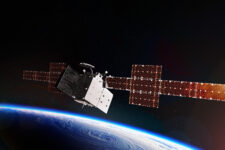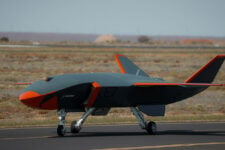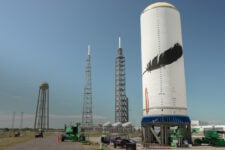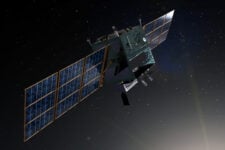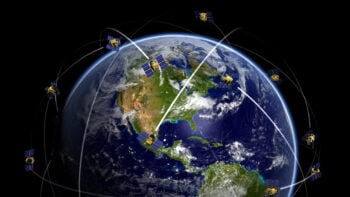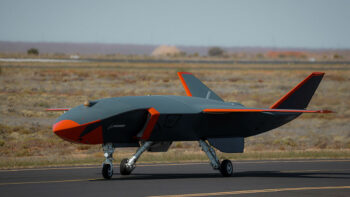
Space Force Maj. Gen. Gregory Gagnon, deputy chief of space operations for intelligence. (US Air Force photo by Staff Sgt. Olivia Stecker)
WASHINGTON — The Space Force’s head of intelligence says the service currently is keeping a very close eye on about 1,000 satellites — both those owned by adversaries and some US birds that might be threatened by adversaries — via a much expanded network of radars and telescopes around the globe.
Maj. Gen. Gregory Gagnon, deputy chief of space operations for intelligence, told the Mitchell Institute today that US space domain awareness (SDA) capabilities have grown substantially since the Space Force was stood up in December 2019.
At that time, US Space Command operated some “two to three dozen government-related sensors,” most of which were optical telescopes or radar first developed to track missiles rather than satellites.
“We are now orchestrating the collection on about 1,000 priority targets in space — right, 1,000 out of 9,500 satellites in space, those are the priorities — with 600 apertures around the world in four different phenomenologies or five different phenomenologies,” Gagnon said.
“We are moving at phenomenal speed,” he said, “and it’s a testament to some of the key people at SSC [Space Systems Command].”
Those “thousand objects I’m interested in,” Gagnon added, could be thought of “in joint terms as named areas of interest.” They include adversary satellites and certain US military satellites, he noted, saying: “Sometimes I want to be looking at my own object to see if anything’s going on, right?”
Further, the 600 sensor systems now being tapped include systems owned by commercial and allied partners that are feeding information into the Space Force’s Unified Data Library (UDL), he noted.
“Not only are we collecting this information, we’re orchestrating this with the commercial sector, so that we bring it all into a data repository that’s open, that allows not just ourselves, but our partners to have access to it — and our partners being US government partners, our partners being coalition partners,” Gagnon said. “We have over 22 partners using data out of this infrastructure.”
The increased number of sensors has meant a subsequent increase in data to be processed, he explained. For example, he said that during its early days, the Space Force was putting out warnings about satellite maneuvers at a rate of about six or seven per month. It now is issuing some 11,000 “maneuver alerts” every month that are generated both by Guardians and trained personnel in 11 other countries.
The improved SDA capabilities, Gagnon said, are foundational to the ability of Space Force intelligence officers — “in the uniformed part of the Space Force, 14 percent is intelligence professionals,” compared to about six percent in the Air Force and Army — to inform operators about threats. For example, providing intelligence to a commander “who has to decide whether to move satellites or not move satellites.”
That data also is being fed to the service’s recently formed “targeting squadron,” he added. (The Space Force stood up the 75th Intelligence, Surveillance and Reconnaissance Squadron last August to create strike option portfolios for adversary spacecraft.)
“That targeting squadron is purposely designed to do target systems analysis, which will … basically, find vulnerabilities,” he said. Once those critical nodes or critical vulnerabilities are discovered in adversary space systems, that data is provided to the Joint Force commander along with targeting options “from a multidomain perspective, using all elements of military power,” Gagnon explained.
“That could be taking out a link between a satellite in the ground, that could be hitting a key node … on the ground,” he added.
‘No silver bullet:’ Military will need multiple systems to back up GPS
Each technique available now or in the foreseeable future for what is known as alt-PNT comes with a need to make size, weight, power and cost trade-offs based on what type of platform is being used, according to experts.


